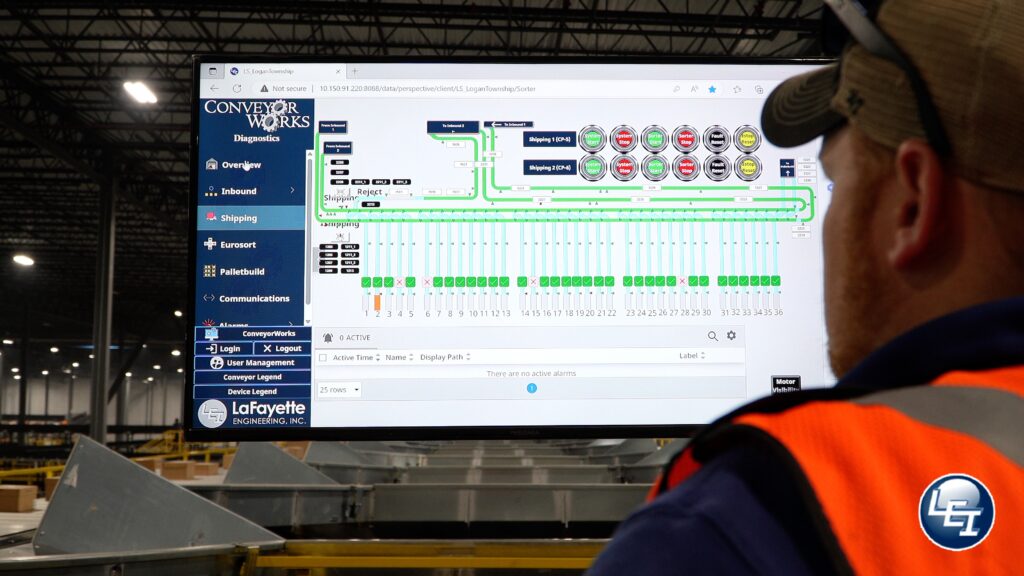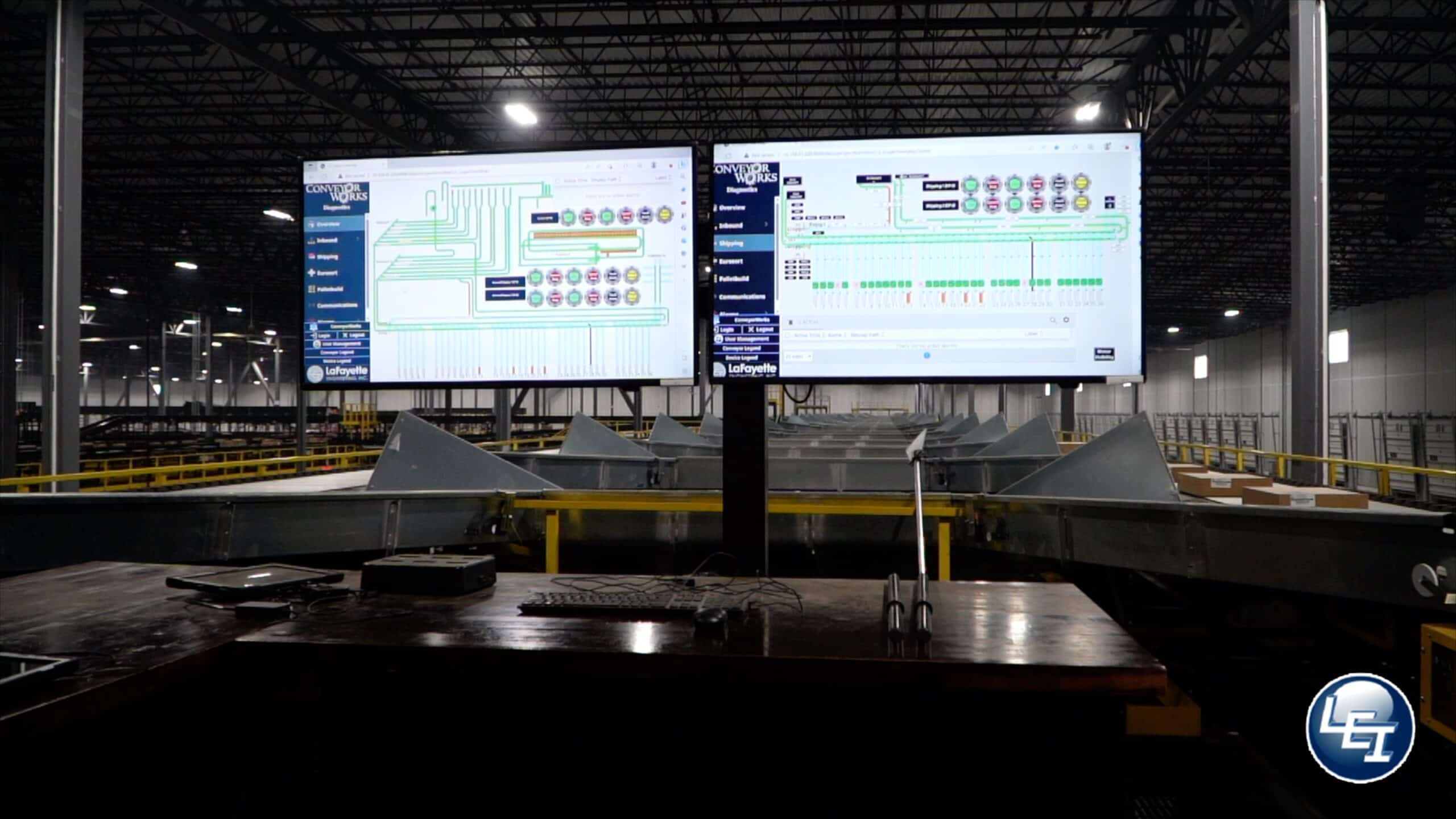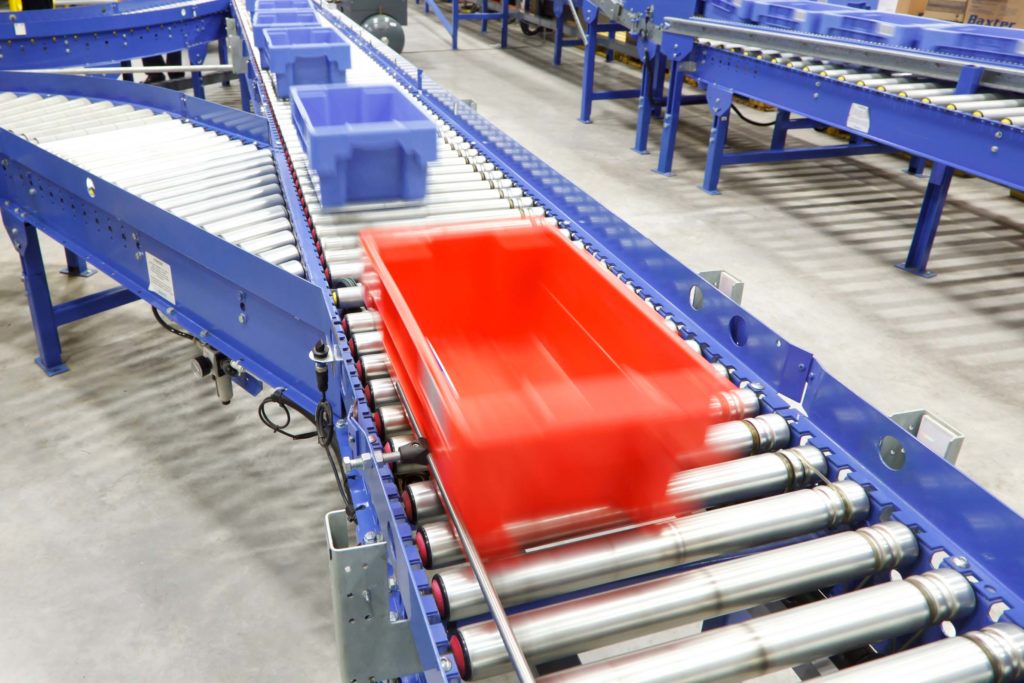Table of Contents
In today’s complex warehouse environments, understanding the nuances and functionalities of Warehouse Execution Systems (WES), Warehouse Control Systems (WCS), and Warehouse Management Systems (WMS) is essential. Each system plays a unique role in enhancing operational efficiency and has distinct advantages. Lafayette Engineering, with its comprehensive services in warehouse control systems, is ideally positioned to help businesses understand and implement these technologies effectively.

WES, WCS, and WMS: What Are the Differences?
Warehouse Execution System (WES):
A Warehouse Execution System (WES) bridges the gap between the strategic planning capabilities of a WMS and the real-time control functionalities of a WCS. It focuses on optimizing warehouse execution in real-time, considering factors like labor availability, equipment status, and dynamic order fulfillment priorities. Here’s a breakdown of the core functionalities of a WES:
- Real-time Task Management: The Warehouse Execution System assigns tasks to warehouse personnel and equipment in real-time, considering factors like worker skills, equipment availability, and order urgency.
- Labor Optimization: The WES optimizes labor allocation by matching tasks to workers with the appropriate skills and experience, ensuring efficient resource utilization.
- Dynamic Order Fulfillment: The WES prioritizes orders based on factors like due dates, customer importance, and item availability, ensuring on-time deliveries and customer satisfaction.
Warehouse Control System (WCS):
A Warehouse Control System (WCS) acts as the execution arm of a WCS, focusing on real-time control of automated equipment within the warehouse. It serves as the intermediary between the WMS, which provides high-level instructions, and the warehouse’s automated equipment like conveyors, sorters, and automated storage and retrieval systems (AS/RS). Here are some of the key functions of a WCS:
- Real-time Communication: The WCS receives commands from the WMS and translates them into actionable instructions for automated equipment.
- Equipment Control: The WCS controls the movement of inventory within the warehouse by directing equipment like conveyors, sorters, and AS/RS to move, sort, and store goods efficiently.
- Execution Monitoring: The WCS monitors the performance of automated equipment and provides real-time feedback to the WMS, enabling proactive identification and resolution of any issues.
Warehouse Management System (WMS):
A Warehouse Management System (WMS) acts as the central nervous system of a warehouse, providing overall visibility and control over inventory, order processing, and resources. It’s the maestro of the warehouse, orchestrating the flow of goods from receiving to storage, picking, packing, and shipping. Here’s a glimpse into the core functionalities of a WMS:
- Inventory Management: A WMS tracks inventory levels across the warehouse, including real-time location data. This empowers informed decision-making regarding stock allocation, replenishment, and cycle counting.
- Order Processing: The WMS streamlines order processing by automating tasks like order picking, generating pick lists, and routing pickers to optimize picking paths.
- Labor Management: The WMS assigns tasks to warehouse personnel, ensuring efficient labor utilization and improved productivity.
- Reporting and Analytics: The WMS generates comprehensive reports that provide valuable insights into warehouse performance metrics like order fulfillment times, picking accuracy, and inventory turnover.
Different Purposes of WES, WCS, and WMS
- Warehouse Execution System: Streamlines real-time operations by coordinating various tasks within the warehouse, optimizing both automated and manual resources.
- WCS: Primarily controls physical automation equipment, directing actions like sorting and material movement, crucial for day-to-day operations.
- WMS: Manages broader aspects such as inventory levels, shipping logistics, and workforce allocation, essential for strategic business planning.
Benefits of Each System
WES Benefits:
- Enhances operational efficiency through optimized task management.
- Provides crucial data for informed decision-making.
- Increases flexibility and scalability to meet changing operational demands.
WCS Benefits:
- Improves the precision and efficiency of material handling equipment.
- Offers real-time monitoring and troubleshooting.
- Facilitates seamless integration with other technological systems.
WMS Benefits:
- Improves inventory accuracy and reduces errors in order fulfillment.
- Streamlines order processing, enhancing customer satisfaction.
- Offers comprehensive reporting tools for strategic planning and analysis.
FAQs
Q: What are WMS, WES, and WCS? A: WMS manages comprehensive warehouse operations, WES optimizes real-time task execution, and WCS controls automated equipment.
Q: How do WES, WCS, and WMS integrate? A: These systems integrate to streamline warehouse operations, with WES serving as the operational brain, WCS managing equipment, and WMS handling overarching management tasks.
Q: Can WES, WCS, and WMS improve ROI? A: Yes, by optimizing different aspects of warehouse operations, they enhance efficiency, reduce costs, and ultimately improve return on investment.
Q: What’s the primary advantage of WCS over WMS? A: WCS specializes in real-time equipment control, optimizing the use of automated systems and enhancing operational efficiency.
Conclusion
For businesses looking to streamline warehouse operations, understanding and integrating WES, WCS, and WMS is crucial. Lafayette Engineering provides expert services to help businesses harness the power of these systems, optimizing efficiency and boosting profitability.
Follow us on Linkedin




